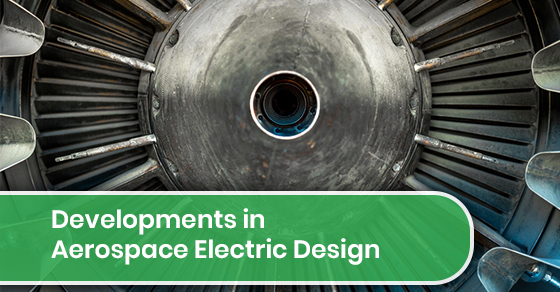Developments in Aerospace Electric Design
There have been tremendous advancements made in the field of military and aerospace electronics in Toronto. As space exploration continues to expand, a greater emphasis has been placed on the spatial exploration component or sector of the aerospace industry. As such, very sophisticated and complex systems must be developed that boost durability, toughness, and unrivalled computing power as well.
Thus, the latest military and aerospace electronics must be able to adapt to extreme temperatures and intense vibrations at very high altitudes. They must be capable of dealing with high-pressure environments and control commercial airlines and space crafts without compromise to efficiency, safety, and durability. Here, we will discuss some of the latest developments in aerospace, electric design.
Longer Lasting and More Durable Connectors
Focusing on maximizing the toughness of sensors and electronics in aerospace systems will not suffice. Instead, what is arguably even more critical are the cables and connectors that connect them. Electronic connector design has been left behind until only recently. Engineering teams have worked around the clock to ensure that they are able to withstand rapid movement at extreme temperatures, such as the case with space exploration and travel.
Today, engineers implement housings that are epoxy-based when working with the latest electronic designs in aerospace. The connectors and capacitors being designed today can handle an extreme need for speed without issue, as well as very low-temperature environments in space.
They are also designed to withstand ripple intensity and extremely high electrical currents without compromise to the safety of the crew and passengers.
To achieve such excellent results, engineers add extra contact points and machine the connectors via single pieces of beryllium, or another type of metal that has high conductive properties. They may also be asked to add gold plating to meet the stringent standards of military personnel or organizations.
The advancements mentioned above in regards to the aerospace industry have allowed for the fabrication of state-of-the-art connectors that are deemed appropriate for space-age use.
Ameliorations in Aircraft Health Monitoring
The design and manufacturing of top-of-the-line health monitoring systems for aircrafts have been a dream for those who work in the integrated electronics design field for many decades. The good news is that recent advancements have made the development of such systems possible.
These systems are important is because they allow pilots to comprehend what is happening with their aircraft at all times. Including, how to properly operate the airborne vehicle in the event of severe damage or hardware malfunction. However, for such a system to be made, thousands of very complex and sophisticated sensors will need to be created.
These sensors need to function in conjunction with an ultra-sophisticated and centralized computer configuration that is capable of receiving, comprehending, and relaying data to the pilot without confusing or overwhelming them.
Today, the expenditures and the risks involved in space flight are the highest they have ever been. The pressure for creating top-of-the-line health monitoring systems that work optimally in space has never been more enormous. The good news is the pressure to evolve has led to some remarkable technological advancements in central computing as well as sensor-based technology.
Superior Thermal Features
In the realm of aerospace electronics design, heat has served as only a minor issue for many decades. However, as crafts began to leave the Earth’s atmosphere, newfound challenges presented themselves, such as trying to figure out how to get them to breach the atmosphere before burning up.
It can be argued that thermal insulation, or shielding, is the most important factor. As far as electronic components are concerned, as the components will not work after fusion or melting has occurred.
The good news is there have been some recent advancements in the field of thermal management. The modelling of certain complex components has been automated, as well as the fabrication of state-of-the-art cooling circulation systems that do not require a large amount of space to function.
Impressive advancements have also been made in simulation technology. There has been the development of sophisticated simulation tools that can accurately model the real-world physics of breaching the atmosphere, as well as the re-entry phase.
Unmanned Navigation
With human lives being a top priority, as well as the increased reliance on artificial intelligence, the move to unmanned commercial aircraft, drones, and spacecraft was inevitable. However, the world is not yet prepared for completely unmanned aerospace vehicles because the electronics design required for such a feat is still not available.
Achieving such a level of communication and control is feasible in the not-too-distant future as advancements have continued to be made in every aspect of electronic design in the aerospace industry. As a result, it is believed that aerospace companies will be able to deploy spacecraft and aircraft that can control their own flight functions and paths in the foreseeable future. Interestingly, such advancements will have a very positive impact on the aerospace, electronic design field in Toronto as well as other developed parts of the world.
Circuits Central
Circuits Central specializes in military and defence electronics manufacturing and military and aerospace electronics in Toronto. For instance, we provide leading-edge aerial surveillance technology for our aerospace and military clients, as well as state-of-the-art health and usage monitoring systems. We also have extensive experience in low volume, high-variety manufacturing. To learn more, please visit our website or give us a call at 888-821-7746 for a free, no-obligation quote and consultation.
Sources:
https://subcontracteu.com/en/blog/trends-aerospace-electronics-design
https://www.circuits-central.com/industries/aerospace-defence/

